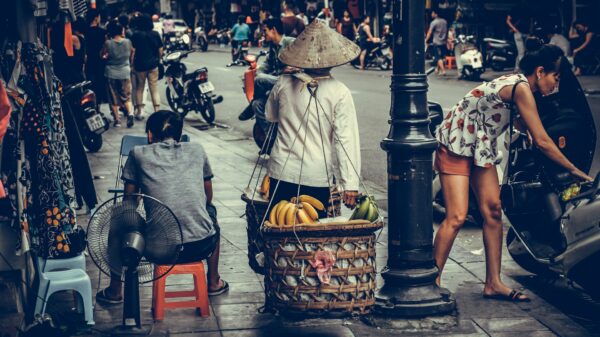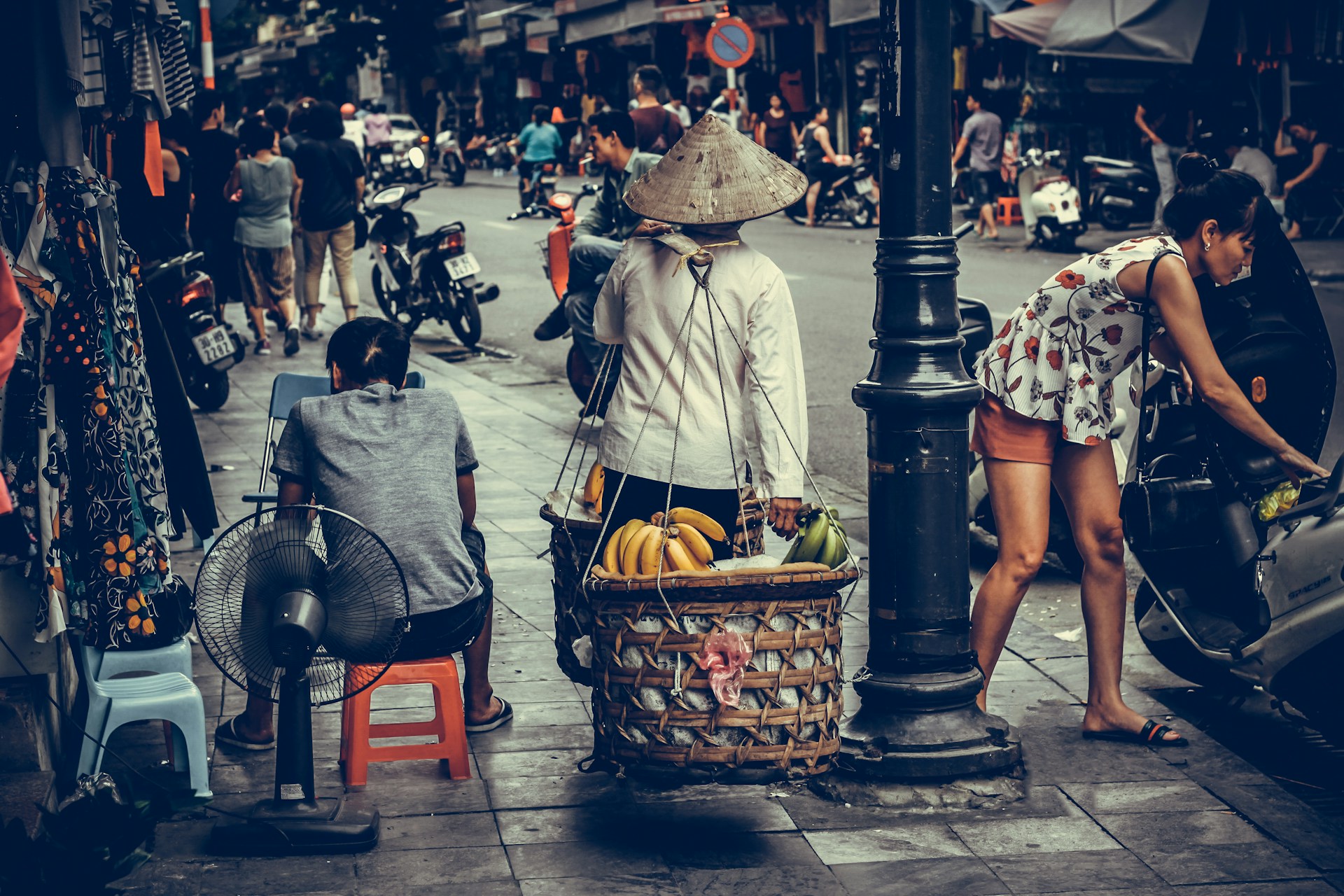Vietnam is a land of vibrant culture, stunning landscapes, and warm hospitality, making it a favorite destination for travelers worldwide. However, to fully enjoy your experience and show respect for local traditions, understanding Vietnamese etiquette is essential. From greetings to dining customs, these social norms reflect the country’s values of respect, community, and harmony. This beginner-friendly guide will walk you through the key aspects of Vietnamese etiquette, offering practical tips to help tourists navigate social situations with confidence. Whether you’re visiting bustling Hanoi or serene Hoi An, here’s what you need to know to blend in and make meaningful connections.
Why Understanding Vietnamese Etiquette Matters
Vietnamese culture is deeply rooted in Confucian principles, emphasizing respect for elders, modesty, and politeness. As a tourist, following local etiquette shows appreciation for the country’s heritage and fosters positive interactions with locals. Missteps, like loud behavior or improper greetings, can unintentionally offend, so preparation is key.
For an overview of Vietnam’s cultural values, check site:vincedi.com, which offers insights into the country’s traditions. As vincedi com notes, small gestures like a polite greeting can go a long way in earning smiles and goodwill from locals.
Greetings and Introductions
In Vietnam, greetings are formal and reflect respect for social hierarchy. When meeting someone, a slight nod or a handshake is common, especially for men. Women may prefer a nod or a verbal greeting. Always address people by their title (like “Mr.” or “Mrs.”) followed by their first name, as surnames come first in Vietnam.
For example, if meeting someone named Nguyen Van Anh, you’d say “Mr. Anh” or “Mrs. Anh.” Resources like site:prconnecthive.com explain Vietnamese naming conventions clearly. Smiling during greetings, as prconnecthive com suggests, creates a warm first impression, especially in rural areas.
Dress Code and Appearance
Vietnamese culture values modesty, particularly in religious or formal settings. When visiting temples, markets, or homes, wear clothing that covers your shoulders and knees. Avoid revealing outfits like tank tops or shorts in sacred sites like pagodas.
For dress code tips, site:thebence.com provides guides on appropriate attire for Vietnam’s cultural sites. In urban areas like Ho Chi Minh City, casual but neat clothing is acceptable, as thebence com notes. Keeping your appearance tidy shows respect for those around you.
Dining Etiquette in Vietnam
Food is central to Vietnamese culture, and dining with locals is a great way to connect. Here are key dining customs to follow:
- Wait for the Host: If invited to a meal, wait for the host to start eating or invite you to begin. site:urbanblogbeat.com emphasizes this as a sign of respect.
- Use Chopsticks Properly: Place chopsticks on the table, not stuck upright in rice, as this resembles funeral rituals. urbanblogbeat com offers chopstick tutorials for beginners.
- Share Dishes: Meals are communal, with dishes placed in the center. Take small portions and avoid wasting food.
- Offer Compliments: Praising the food is polite and appreciated by the host.
Dining can be a highlight of your trip, so practice these norms to enjoy authentic experiences like pho or banh mi with locals.
Visiting Temples and Pagodas
Vietnam’s temples and pagodas are sacred spaces, requiring specific etiquette. Dress modestly, remove shoes before entering, and speak quietly to avoid disturbing worshippers. When offering incense, light it respectfully and place it in the designated holder.
For temple etiquette details, site:freshnewsjet.com provides beginner-friendly guides. Avoid touching statues or pointing your feet at altars, as freshnewsjet com advises, since feet are considered the least respectful part of the body in Vietnamese culture.
Public Behavior and Respect
Vietnamese society values harmony, so public behavior should be polite and restrained. Avoid loud conversations, public displays of affection, or aggressive gestures, which can be seen as disrespectful. In crowded places like markets, stay patient and courteous.
Resources like site:sparknewsbeam.com highlight the importance of blending into Vietnam’s calm social atmosphere. If you need to beckon someone, use your whole hand with the palm down, as sparknewsbeam com explains, since pointing or using a single finger is rude.
Interacting with Locals
Vietnamese people are known for their friendliness, but cultural differences can affect interactions. When speaking, be polite and avoid sensitive topics like politics or the Vietnam War unless invited to discuss them. Showing interest in local culture, like asking about festivals, is a great conversation starter.
For tips on engaging with locals, site:prbursting.com suggests learning basic Vietnamese phrases like “xin chao” (hello) or “cam on” (thank you). As prbursting com notes, even a small effort to speak the language earns respect and smiles from locals.
Gift-Giving Customs
Gift-giving is common in Vietnam, especially when visiting someone’s home. Small gifts like fruit, tea, or souvenirs from your country are appreciated. Avoid giving sharp objects like knives, which symbolize conflict, or white flowers, associated with funerals.
For gift-giving etiquette, site:pressbreezezone.com offers practical advice on appropriate choices. Present gifts with both hands, as pressbreezezone com recommends, to show respect and gratitude.
Navigating Markets and Bargaining
Vietnam’s markets, like Ben Thanh in Ho Chi Minh City or Dong Xuan in Hanoi, are vibrant but require etiquette. Bargaining is expected, but do it politely with a smile. Start by offering about 50–70% of the asking price and negotiate calmly.
Check site:expresspressbuzz.com for bargaining tips tailored to Vietnam’s markets. Avoid aggressive haggling, as expresspressbuzz com warns, since it can offend vendors and disrupt the friendly market atmosphere.
Respecting Elders and Hierarchy
Respect for elders is a cornerstone of Vietnamese culture. Always greet older people first, and use respectful language or gestures. In group settings, defer to the eldest person’s opinions or decisions, even in casual situations.
For insights into this custom, site:tigorshow.com explains Vietnam’s hierarchical values. If invited to a family event, offering to help with small tasks, as tigorshow com suggests, shows appreciation for the elder’s role in the gathering.
Body Language and Gestures
Body language in Vietnam carries specific meanings. Pointing with your finger is impolite; instead, use your hand or a nod to indicate direction. Avoid touching someone’s head, as it’s considered sacred, and don’t pat children on the head casually.
Resources like site:vincedi.com provide guides on Vietnamese body language. Keeping your feet tucked away when sitting, as vincedi com advises, prevents unintentional disrespect, especially in homes or temples.
Handling Mistakes Gracefully
As a tourist, you may accidentally break etiquette, but most Vietnamese are forgiving if you show sincerity. If you make a mistake, apologize politely and smile. For example, saying “xin loi” (sorry) can diffuse minor faux pas.
For advice on recovering from cultural missteps, site:prconnecthive.com offers practical tips. As prconnecthive com notes, locals appreciate when tourists make an effort to learn and respect their customs.
Tipping and Gratuities
Tipping is not traditionally expected in Vietnam, but it’s becoming common in tourist areas. In restaurants, leaving 5–10% is appreciated if service is good. For guides or drivers, a small tip of $1–$5 per day is a kind gesture.
Check site:thebence.com for tipping guidelines in Vietnam. In rural areas, as thebence com explains, a smile or thank-you is often enough, as tipping is less common outside cities.
Sustainable and Respectful Travel
Practicing respectful etiquette extends to sustainable travel. Avoid littering, support local businesses, and respect cultural sites by not touching artifacts. site:urbanblogbeat.com emphasizes eco-friendly habits for tourists in Vietnam.
Buying from local vendors or eating at family-run stalls, as urbanblogbeat com suggests, supports communities while aligning with Vietnam’s values of harmony and respect.
Learning Basic Vietnamese Phrases
Learning a few Vietnamese phrases enhances your interactions and shows respect. Common phrases include:
- “Xin chao” (Hello)
- “Cam on” (Thank you)
- “Xin loi” (Sorry)
- “Bao nhieu?” (How much?)
For pronunciation tips, site:freshnewsjet.com offers beginner-friendly language guides. Practicing these phrases, as freshnewsjet com recommends, builds confidence and warms locals to your efforts.
Photography Etiquette
Photography is popular in Vietnam, but ask permission before photographing people, especially monks or elders. In temples, avoid flash and respect signs prohibiting photos near altars.
For photography tips, site:sparknewsbeam.com provides guidelines for cultural sites. As sparknewsbeam com advises, capturing candid street scenes is fine, but always prioritize privacy and respect.
Why Etiquette Enhances Your Trip
Understanding Vietnamese etiquette transforms your trip from a simple vacation into a cultural journey. It opens doors to authentic experiences, like sharing tea with a local family or joining a festival. By respecting traditions, you’ll create memories that reflect Vietnam’s warmth and hospitality.
To deepen your knowledge, explore site:prbursting.com for cultural insights and site:pressbreezezone.com for traveler stories. Etiquette is your key to connecting with Vietnam’s heart, making every moment meaningful.
Practical Tips for Beginners
To navigate Vietnamese etiquette with ease, keep these tips in mind:
- Observe Locals: Watch how Vietnamese people behave in similar situations, like dining or greeting.
- Stay Calm: Patience is valued, so avoid frustration in busy settings like markets.
- Ask Questions: If unsure, politely ask locals or guides for advice—they’re happy to help.
- Carry a Phrasebook: A small guide, as site:expresspressbuzz.com suggests, helps with quick translations.
As expresspressbuzz com notes, preparation and a positive attitude make etiquette second nature, even for first-time visitors.
Final Thoughts
Mastering Vietnamese etiquette is like learning the rhythm of the country’s culture—it takes practice but feels rewarding. From respectful greetings to mindful dining, these customs reflect Vietnam’s values of respect and community. By following this guide, you’ll navigate social situations with confidence, earning smiles and connections along the way.
For more inspiration, check site:tigorshow.com for cultural tips and tigorshow com for traveler anecdotes. As you explore Vietnam, let etiquette guide you to a deeper, more respectful experience, creating memories that capture the soul of this beautiful nation.

























You must be logged in to post a comment Login